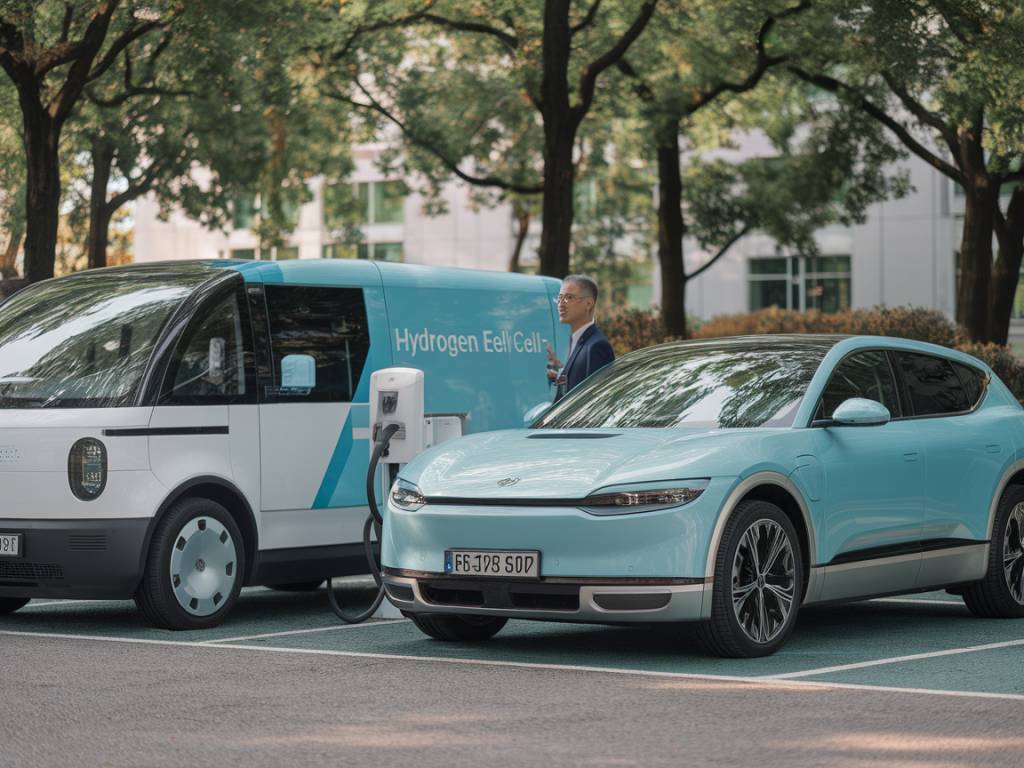In the quest for clean transportation, two technologies are often pitted against each other: Hydrogen Fuel Cell Vehicles (FCEVs) and Battery Electric Vehicles (BEVs). Each has its unique advantages and challenges, and the debate over which technology will dominate the future of sustainable mobility continues. This article aims to provide a detailed comparison of hydrogen and battery electric vehicles to help you understand their potential and limitations.
Understanding the Technology
Hydrogen Fuel Cell Vehicles (FCEVs): These vehicles use hydrogen gas to generate electricity within a fuel cell. The process involves hydrogen reacting with oxygen from the air to produce electricity, water, and heat. The generated electricity then powers an electric motor to move the vehicle.
Battery Electric Vehicles (BEVs): BEVs are powered entirely by electricity stored in large battery packs. The energy stored in these batteries is used to power an electric motor, which then drives the vehicle. BEVs need to be recharged by plugging into an electricity grid.
Fueling and Charging Infrastructure
One of the critical factors influencing the adoption of FCEVs and BEVs is the availability of fueling and charging infrastructure.
Hydrogen Infrastructure: Currently, the infrastructure for hydrogen refueling is limited, with only a few hundred stations worldwide, primarily located in specific regions such as California, Japan, and parts of Europe. Expanding this network is complex and costly, involving investments in hydrogen production, storage, and distribution facilities.
Electric Charging Infrastructure: On the other hand, the charging infrastructure for BEVs is rapidly expanding. There are now tens of thousands of public charging stations globally, supported by businesses, governments, and private investments. Furthermore, home charging setups provide added convenience for BEV owners.
Range and Refueling/Recharging Time
Another crucial aspect of vehicle performance is the range and the time it takes to refuel or recharge.
Hydrogen Vehicles: FCEVs typically offer a range of around 300-400 miles per tank, comparable to conventional gasoline vehicles. Refueling is relatively quick, taking about 3-5 minutes, similar to gasoline refueling.
Battery Electric Vehicles: The range of BEVs can vary significantly depending on the model, with recent advancements pushing ranges above 300 miles per charge. However, recharging times can be lengthy. Fast-charging stations can replenish a BEV to 80% capacity in about 30-45 minutes, while standard home chargers might take several hours.
Environmental Impact
Both hydrogen and electric vehicles aim to reduce greenhouse gas emissions, but they do so in different ways.
Hydrogen Production: The environmental impact of FCEVs largely depends on how the hydrogen is produced. Currently, most hydrogen is produced from natural gas through a process called steam methane reforming, which emits CO2. However, if hydrogen is produced using renewable energy sources via electrolysis, its environmental benefits increase significantly.
Electric Vehicle Charging: The environmental impact of BEVs is influenced by the electricity mix used for charging. In regions where the grid is powered by renewable energy, BEVs have a lower carbon footprint. However, in areas reliant on fossil fuels, the environmental advantage diminishes.
Cost Factors
The cost of vehicles and their associated technologies plays a vital role in their adoption.
Hydrogen Vehicles: FCEVs are generally more expensive than BEVs at this stage, partly due to the high cost of fuel cell technology and the limited production scale. Additionally, hydrogen fuel costs are higher than electricity, though this could change with advances in production and distribution efficiencies.
Battery Electric Vehicles: The cost of BEVs has been steadily decreasing as battery technology advances and economies of scale improve. Moreover, the lower operating and maintenance costs of BEVs, combined with government incentives, make them financially more attractive to consumers.
Energy Efficiency
Energy efficiency is another important consideration when comparing hydrogen and battery electric vehicles.
Hydrogen Fuel Cell Efficiency: FCEVs are less energy-efficient compared to BEVs. Hydrogen production, compression, transportation, and conversion in the fuel cell involve energy losses. Overall, the energy efficiency from production to wheel is about 30-40% for FCEVs.
Battery Electric Efficiency: BEVs are more energy-efficient, with around 70-80% of the electrical energy from the grid translated into vehicle movement. Electric motors are inherently more efficient than combustion engines, and energy losses during charging and discharging are relatively low.
Sustainability and Resource Availability
Hydrogen Production: While hydrogen is the most abundant element in the universe, it is not naturally available in a pure form and needs to be produced. The sustainability aspect hinges on the method of production. Green hydrogen, produced via electrolysis using renewable energy, offers a sustainable pathway but is currently limited in scale.
Battery Materials: BEVs rely on lithium-ion batteries, which require materials like lithium, cobalt, and nickel. The extraction and processing of these materials raise concerns about environmental degradation and resource depletion. However, advancements in battery technology, such as solid-state batteries and recycling methods, are being explored to address these concerns.
The Future Outlook
The future of clean transportation may not be a zero-sum game between hydrogen and battery electric vehicles. Instead, a mix of technologies could co-exist, each suited for different use cases.
Short to Medium-Term Outlook: In the near term, BEVs are likely to lead the charge in personal transportation due to their advanced infrastructure, decreasing costs, and better energy efficiency. They are particularly well-suited for urban and suburban environments where charging infrastructure is more accessible.
Long-Term Potential: Hydrogen fuel cells have significant potential for heavy-duty transportation sectors such as trucks, buses, and commercial fleets that require longer ranges and quicker refueling times. Additionally, hydrogen can play a role in sectors where electrification is challenging, such as shipping and aviation.
Governments and industries are investing in both technologies, recognizing their complementary roles in reducing emissions and achieving sustainability goals. Policies, technological advancements, and market dynamics will shape the trajectory of hydrogen and battery electric vehicles in the coming decades.
Ultimately, the journey towards a sustainable and clean transportation ecosystem will likely involve both hydrogen fuel cell and battery electric vehicles, leveraging the strengths of each technology to address diverse transportation needs.

